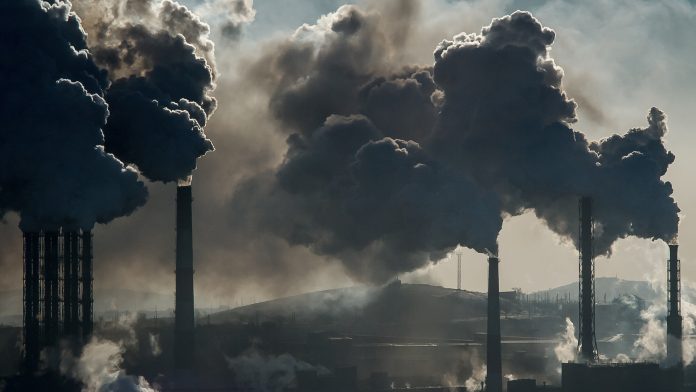New research suggests that the impacts of air pollution differ drastically depending on the location where the pollutants are emitted.
A study performed by researchers at The University of Texas at Austin and the University of California San Diego discovered that how significantly air pollution affects human health, economies, and agriculture varies substantially based on the region they occur. The findings may encourage certain countries to ramp up their emission-cutting strategies.
What is air pollution?
Air pollution contains tiny, solid particles and liquid droplets known as aerosols that contribute to smog. They are predominantly emitted by industrial factories, vehicle exhausts, and power plants and impact human health and agricultural and economic productivity uniquely worldwide compared to carbon dioxide (CO2) emissions.
Aerosols can directly affect human health and the climate independently of CO2, and when inhaled, they are linked to negative health impacts. They can also influence temperature, precipitation patterns, and how much sunlight reaches the surface of the planet. During fuel combustion, aerosol and CO2 emissions are often emitted simultaneously; however, the two substances behave differently in Earth’s atmosphere.
Geeta Persad, the co-lead author of the study and an assistant professor at the UT Austin Jackson School of Geosciences, explained: “Carbon dioxide has the same impact on climate no matter who emits it. But these aerosols tend to stay concentrated near where they’re emitted, so the effect they have on the climate system is very patchy and very dependent on where they’re coming from.”
How do aerosol emissions impact different regions?
The researchers analysed eight crucial regions for their air pollution investigation, including Brazil, China, East Africa, Western Europe, India, Indonesia, the US and South Africa. They discovered that the location the aerosol pollutants are emitted could exacerbate the social costs of carbon – an estimate of the economic costs greenhouse gasses have on society – by as much as 66%.
Jennifer Burney, the co-lead author from the UC San Diego School of Global Policy and Strategy, commented: “This research highlights how the harmful effects of our emissions are generally underestimated. CO2 is making the planet warmer, but it also gets emitted with a bunch of other compounds that impact people and plants directly and cause climate changes in their own right.”
To analyse the impacts of aerosols and CO2, the team developed a series of climate simulations by employing the Community Earth System Model version 1, designed by the National Center for Atmospheric Research. The researchers then performed simulations in which all eight regions had identical aerosol emissions, mapping how temperature, precipitation, and surface air quality were affected.
Subsequently, the researchers applied this data to known relationships between air and climate quality, infant mortality, crop productivity, and gross domestic product in the regions. They then compared the total societal costs of these aerosol impacts against the societal costs of co-emitted CO2, creating global maps of the combined effects.
The results illuminated that emissions from some regions produce air quality and climate effects that range from two to 10 times as strong as others. Moreover, societal costs sometimes affect neighbouring regions more than those producing air pollution; for example, in Europe, local emissions cause four times as many infant deaths outside the continent than in Europe. Despite the study focussing on specific regions, the team warned that aerosol emissions are always bad for the emitter and the planet overall.
Persad concluded: “While we might think about aerosols, which cool the climate, as having the silver lining of counteracting CO2-driven warming, when we look at all these effects in combination, we find that no region experiences overall local benefits or generates overall global benefits by emitting aerosols.”





